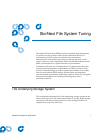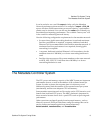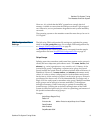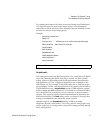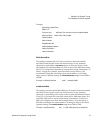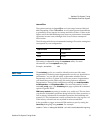
StorNext File System Tuning
The Metadata Controller System
StorNext File System Tuning Guide 8
It can be useful to use a tool like netperf to help verify the Metadata
Network performance characteristics. For example, if
netperf -t TCP_RR
reports less than 15,000 transactions per second capacity, a performance
penalty may be incurred. You can also use the
netstat tool to identify tcp
retransmissions impacting performance. The cvadmin “latency-test” tool
is also useful for measuring network latency.
Note the following configuration requirements for the metadata network:
• In cases where gigabit networking hardware is used and maximum
StorNext performance is required, a separate, dedicated switched
Ethernet LAN is recommended for the StorNext metadata network. If
maximum StorNext performance is not required, shared gigabit
networking is acceptable.
• A separate, dedicated switched Ethernet LAN is mandatory for the
metadata network if 100 Mbit/s or slower networking hardware is
used.
• StorNext does not support file system metadata on the same network
as iSCSI, NFS, CIFS, or VLAN data when 100 Mbit/s or slower
networking hardware is used.
The Metadata Controller System
The CPU power and memory capacity of the MDC System are important
performance factors, as well as the number of file systems hosted per
system. In order to ensure fast response time it is necessary to use
dedicated systems, limit the number of file systems hosted per system
(maximum 8), and have an adequate CPU and memory.
Some metadata operations such as file creation can be CPU intensive, and
benefit from increased CPU power. The MDC platform is important in
these scenarios because lower clock- speed CPUs such as Sparc degrade
performance.
Other operations can benefit greatly from increased memory, such as
directory traversal. SNFS provides three config file settings that can be
used to realize performance gains from increased memory:
BufferCacheSize, InodeCacheSize, and ThreadPoolSize.




